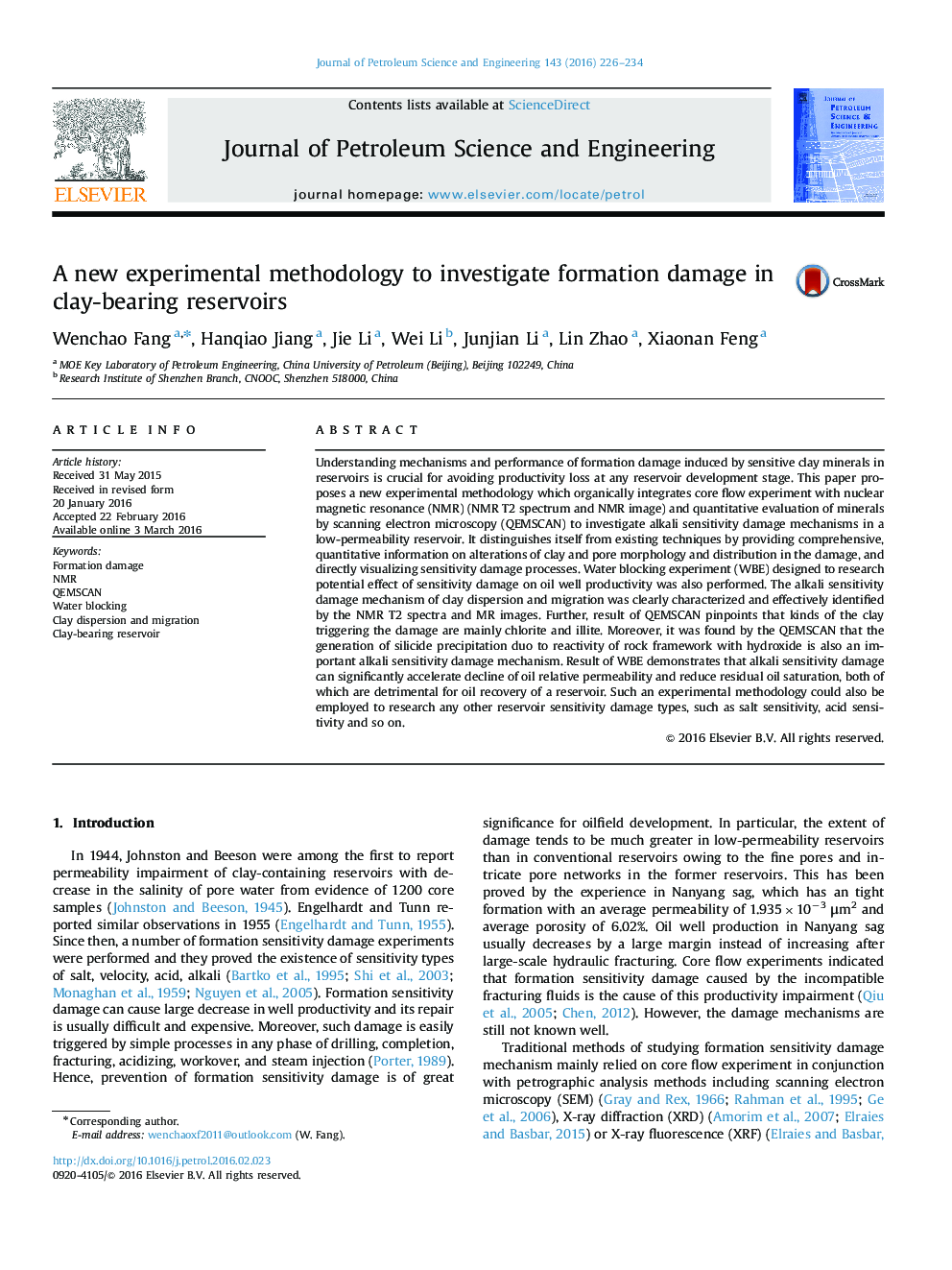| Article ID | Journal | Published Year | Pages | File Type |
|---|---|---|---|---|
| 1754583 | Journal of Petroleum Science and Engineering | 2016 | 9 Pages |
•Techniques of NMR and QEMSCAN are proposed to study sensitivity damage mechanism.•The new methodology can offer robust data on sensitivity damage in ultrafine pores.•The MRI can realize visualization of sensitivity damage process.•Chlorite and illite are main minerals trigging sensitivity damage in Nanyang sag.•Sensitivity damage will aggravate production decline and reduce oil recovery.
Understanding mechanisms and performance of formation damage induced by sensitive clay minerals in reservoirs is crucial for avoiding productivity loss at any reservoir development stage. This paper proposes a new experimental methodology which organically integrates core flow experiment with nuclear magnetic resonance (NMR) (NMR T2 spectrum and NMR image) and quantitative evaluation of minerals by scanning electron microscopy (QEMSCAN) to investigate alkali sensitivity damage mechanisms in a low-permeability reservoir. It distinguishes itself from existing techniques by providing comprehensive, quantitative information on alterations of clay and pore morphology and distribution in the damage, and directly visualizing sensitivity damage processes. Water blocking experiment (WBE) designed to research potential effect of sensitivity damage on oil well productivity was also performed. The alkali sensitivity damage mechanism of clay dispersion and migration was clearly characterized and effectively identified by the NMR T2 spectra and MR images. Further, result of QEMSCAN pinpoints that kinds of the clay triggering the damage are mainly chlorite and illite. Moreover, it was found by the QEMSCAN that the generation of silicide precipitation duo to reactivity of rock framework with hydroxide is also an important alkali sensitivity damage mechanism. Result of WBE demonstrates that alkali sensitivity damage can significantly accelerate decline of oil relative permeability and reduce residual oil saturation, both of which are detrimental for oil recovery of a reservoir. Such an experimental methodology could also be employed to research any other reservoir sensitivity damage types, such as salt sensitivity, acid sensitivity and so on.
